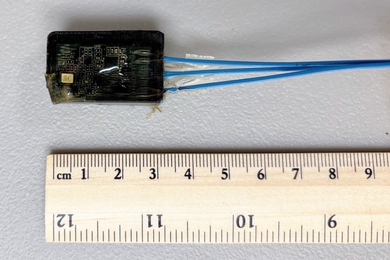Federal auditors have recommended major changes in the way MIT has been planning to allocate the funds for the indirect and direct costs of federal research in the current year.
MIT has reponded to the audit report, which recommends significant departures from past MIT-government agreements and changes in the process by which MIT allocates support costs to research and to education, according to James J. Culliton, Vice President for Financial Operations.
The Defense Contract Audit Agency (DCAA) has made the recommendation to the Office of Naval Research (ONR), which is the fiscal supervisor of MIT's research projects. The ONR, which has not yet decided whether to accept the recommendations, has circulated the DCAA report and MIT's lengthy response to other government agencies. Reports about the DCAA document are beginning to circulate in the news media.
Vice President Culliton summarized the situation as follows:
The DCAA recommended the ONR challenge $22 million out of $131 million which MIT estimated it would cost this year to support the indirect costs of research.
This $22 million of indirect cost is effectively offset by the transfer of $20 million of costs to the direct costs of research projects on campus. The net effect on MIT of this DCAA recommendation would be to increase the cost of benefits to employees on research grants from about 40 percent of salary to 75 percent of salary.
A major part of this issue is whether the tuition cost of MIT research assistants (PhD and ScD graduate students) should be funded through research on and off campus, or only by campus research funds.
The DCAA recommendation would eliminate the portion paid by MIT and non-governmental sources-about $10 million. It would drive up significantly the direct costs of research to the government.
For the past eight years, under an agreement with the government, this cost has been handled indirectly via employee benefits. The result of the indirect method has been a significant increase in a key measure of MIT's productivity-the number of doctoral students graduating.
Of the $22 million of indirect costs, nearly $4 million ($3.8) represents costs which were budgeted at the time the MIT request was prepared but are no longer expected to be incurred and so, of course, have been subtracted from the MIT request.
If all the DCAA recommendations were to be accepted, Mr. Culliton said, the net result to the government on direct and indirect costs of research would be savings of approximately $2 million, including the $778,000 of indirect costs for the five year period of 1986-1990 which MIT withdrew from its reimbursement request last April.
However, this government savings of $2 million could become a small net increase in overall government research costs of up to $2 million at MIT because of the reinstatement (to indirect cost) of post-retirement medical costs of about $6 million. (Approximately 65 percent of this amount would be reimbursed by the Federal government.)
DCAA has agreed to this reinstatement pending the establishment of a Voluntary Employees' Beneficiary Association (VEBA) which MIT will complete prior to the end of the affected Fiscal Year of 1992.
The $778,261 in indirect costs for 1986-1990, withdrawn last April, averaged about $156,000 per year and represented 16/100 of one percent of the indirect costs ($482 million) of doing $2,700 million ($2.7 billion) of direct costs of research for those five years at MIT and its laboratories, including MIT Lincoln Laboratory.
To put it another way, Mr. Culliton said, the accounting for indirect costs for those five years is around 99 and 84/100 percent accurate. That does not excuse the errors that were made; it simply puts them in some perspective. Mr. Culliton noted that for the five years, at MIT and all its laboratories, including Lincoln Laboratory, the indirect costs were 15 percent of the overall research cost-$482 million divided by $3,182 million.
On December 16, MIT sent the Office of Naval Research a check, made out to the US Treasury, for that $778,261. MIT received on December 18 a letter from the Office of the Chief of Naval Research confirming receipt of that check. In the past, such accounting of debits and credits has been done in the forward pricing review for the next year's rate; in the current situation, it is being done by check.
A version of this article appeared in the January 8, 1992 issue of MIT Tech Talk (Volume 36, Number 16).





